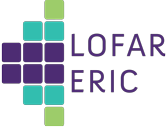Speaker
Description
Quasi-periodic scintillations (QPS) are recurrent radio scintillation features generated by plasma structures in the Earth’s ionosphere. They are generally categorised into two forms, symmetric and asymmetric. Symmetric QPS are characterised by a series of signal intensity fringes either side of a distinct signal fade. In previous literature, such features have only been observed using single channel scintillation observations. Here we present LOFAR broadband ionospheric scintillation observations of exceptionally well defined symmetric quasi-periodic scintillations. Two case studies are shown, one from 15th. December 2016, and one from 30th. January 2018, in which well-defined main signal fades and secondary diffraction fringing are observed. In particular, the broadband observing capabilities of LOFAR permit us to see considerable frequency dependent behaviour in the QPS which, to our knowledge, is a new result. We extract some of the clearest examples of scintillation arcs reported in an ionospheric context, from delay-Doppler spectral analysis of these two events. These arcs permit the extraction of propagation velocities for the plasma structures causing the QPS ranging from 50-200 ms-1, depending on the assumed altitude. The spacing between the individual plasma structures ranges between 5-20 km. The periodicities of the main signal fades in each event and, in the case of the 2018 data, co-temporal ionosonde data, suggest the propagation of the plasma structures causing the QPS is in the E-region. Each of the two events is accurately reproduced using a Gaussian perturbation phase screen model. Individual signal fades and enhancements were modelled using small variations in total electron content (TEC) amplitudes of order1 mTECu, demonstrating the sensitivity of LOFAR to very small fluctuations in ionospheric plasma density. To our knowledge these results are among the most detailed observations and modelling of QPS in the literature.

